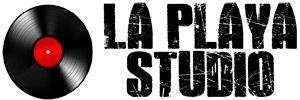
by Andy Reynolds | Feb 6, 2016 | Drums, Studio Equipment, Studio Techniques
I have been trying a new way to mix live drums. I set up direct mics on kick drum, snare drum and hi hat and a stereo pair of condensers for the overhead capturing the whole kit including toms and cymbals. The kick and snare were gated so that the hi hat did not come through, then triggers were sent from the kick and the snare which ended up at the input for the side chain on a stereo compressor put across the stereo overheads. The result is that every time the kick or snare hits the trigger ducks the overhead slightly. This makes a nice tight sound which allows the kick and snare to cut through and pumps the room sound and cymbals in a good way. To see what would happen I then added distortion with tube amplification to the overheads. This created an even more unique sound that was ducking around the kick and snare then expanding out again in the spaces in between. I put an old echo chamber type of reverb in with the distorting amp (before the side chain compressor) and the sound really came together. It might be a bit much for the track and I may well end up backing it right down, but it really added an unusual edge to the sound. Just to see what would happen I sent the snare (mostly playing rims) track to another guitar amp with a heavy rocky sound on it and pushed up the send until I could hear the edgy sound coming in. To give a stereo space to it I sent one side to very short delay with no feedback panned opposite to the dry sound. It added something new to the sound, giving it a kind of Portishead vibe which I think I will keep in the mix.

by Andy Reynolds | Feb 2, 2016 | Bass, Drums, Guitars, Loops and Samples, Percussion, Studio Equipment, Studio Techniques, Stuff that really happened
When you really look at them and analyse why they work, a lot of classic songs and recordings of their success to a musical hook or a particular sound. From a music production point of view this can be called the capturing of magic. When the right player with a written instrument is recorded in the right environment with encouragement and inspiration then the chances of achieving some musical magic and some unique sounds are
greatly increased. It is part of the recording and production process to try to create his opportunities for recording musical magic important to ensure that instruments are in tune and the recording environment is always ready to capture the magic moment.

by Andy Reynolds | Feb 2, 2016 | Drums, Loops and Samples, Studio Techniques
Anyone who has tried looking for the right snare sound for a song will know that you can go through hundreds of snares that might sound good on their own but which don’t work in the track. Sometimes the only thing that works is a mic on an actual snare and yet so few people do this. The best thing is the ability to record incredible dynamics and unique rolls. At La Playa Studio we mic up a snare with two sm57s top and bottom out of phase plus a stereo pair of condenser mics further away to mix in some stereo width. It is a matter of experimenting with the positioning of the microphones depending on how hard the drummer is playing. Sometimes only a top mic sounds better for certain styles, reducing the amount of rattling from the snare wires underneath. The distance away from the head also changes the way the sound is recorded. Further away gives a more real sound but the ambience of the room comes into play here so there is a trade between clarity and reality. Often the best way to start is to get a good sound on the overhead microphones then add in the spot microphones to add focus on the important elements.

by Andy Reynolds | Feb 2, 2016 | Bass, Drums, Percussion, Studio Techniques
When producing tracks that need a good kick and bass balance (that would be most if not all tracks!) it is interesting to see what happens when monitoring on small monitors or headphones. If there is no sub in the system then it can be too easy to overdo the level of bass so that when the track is played over a big pa it distorts and overpowers the track. Many is the time that I have thrown together a new track for a live show that sounds great until I get to play it out live. Now my solution is to use a little 2.1 system with two little tops and a small sub. If it sounds good on here then it will sound good live. I have always wanted to have the luxury of a live pa set up in the studio just for checking mixes. Maybe one day…





Recent Comments